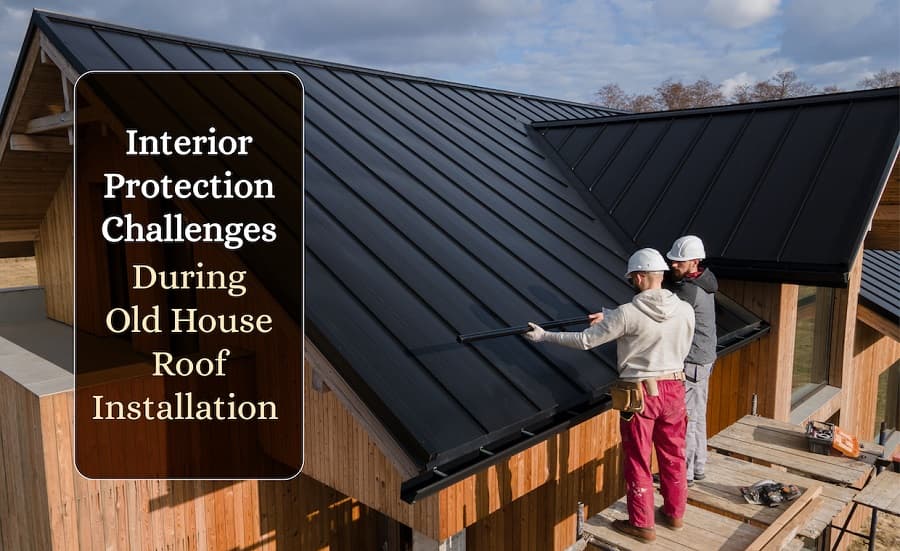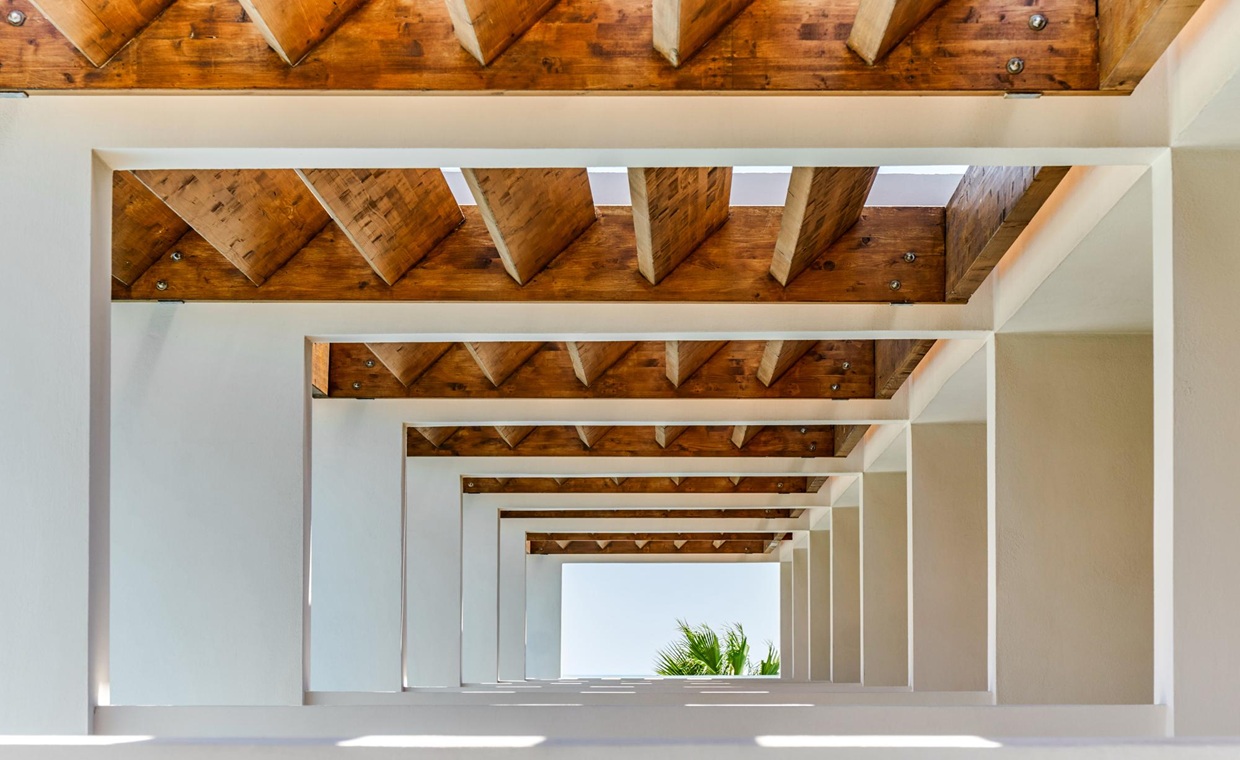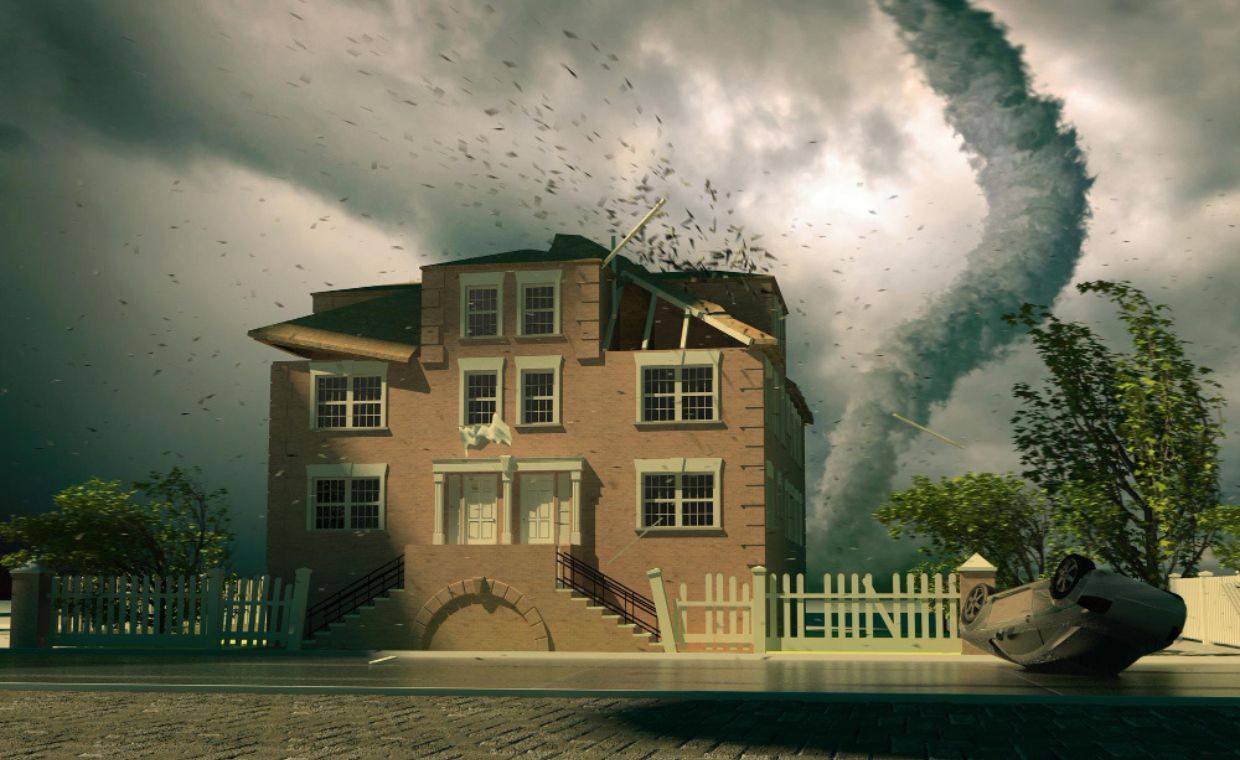
So, you have been awarded the contract to remodel or re roof an old house!. And being a seasoned contractor, you know what interior protection challenges it takes! However, the challenges are many and as they say “Forewarned is Forearmed”. Data shows that roof installation is the most dangerous part of the construction industry. So let us walk you through these challenges before you actually face them. Because roofing debris management is not easy. Since every method of roof tear off and roofing debris removal has its own challenges. How you execute tearing off shingles and roofing debris removal can greatly affect customer satisfaction.
Challenge 1: Electrical Hazards and instability of the roof are the foremost challenges. Before the installation of the roofing protection, watch for any exposed electrical cables or unstable areas before the construction workers walk on them.
Challenge 2: A tarp or temporary roofing protection is the most popular method used for roof debris removal. The idea is to remove the shingles or roofing debris as fast as possible and let it fall on a tarp at ground level. However, all this weight may damage the homeowner’s property and may be a disaster to clean at the end of day.
Challenge 3: Rainy or windy weather can be disastrous. Gusts of wind may displace the temporary roofing protection and the rains may play havoc not only with the homeowner’s property, but also make the roof slippery and a potential disaster for your crew.
Challenge 4: Constantly falling nails, shingles and other heavy or sharp- edged objects may cause faster wear and tear of your temporary roofing protection causing the roofing debris to fall below.
Challenge 5: An ordinary temporary roofing protection loses its durability over time and needs to be replaced every now and then increasing your roof debris removal cost.
So, the importance of a high- quality roofing protection cannot be highlighted enough. Providing a high- grade roofing protection can protect the old home under repairs for up to 90 days, shielding it from bad weather and preventing leakages. Here are a few tips to help you meet these challenges, and execute your project to full customer satisfaction.
01. Assess the Damage
Make a full examination of the damage before clearing the area of debris. Here are a few tips to help you!. If there is a storm or its windy or raining, avoid tarping the roof. Your construction workers should wear appropriate safety equipment like gloves, goggles, protective clothing and sturdy boots. A ladder should be used to reach the roof to closely examine the areas of damage such as broken shingles etc. If the roof is steep or slippery do not step directly on the roof. Remove debris from the roof such as rubble, leaves and twigs for a better view
02. Measuring the Area

The damaged area should be correctly measured to decide the right size of the roofing protection. A measuring tool should be used to calculate the damaged area correctly. After making note of measurements, choose a heavy- duty roofing protection of an appropriate size. When unrolled the roofing protection should cover the damaged area plus about four feet overhang from the roof’s peak. Any extra roofing protection can overhang safely from the edges of the roof.
03. Preparing and Positioning the Roofing Protection
Ensure that the tarpaulin is positioned properly on the roof. It must be secured and weighed down so that it won’t come loose in stormy or windy weather conditions. Here are several ways to secure and weigh down the roofing protection. Use sandbags to weigh down the tarpaulin and prevent it from blowing away in stormy weather, or gusty winds. This is a good temporary measure.
Create an anchor board by rolling a 2×4 inch board into the tarpaulin’s peak end. Nail the temporary suspended ceiling to the anchor board. The board must be two feet longer than its width and sit against the roof to prevent collecting debris, rainwater or snow. Screw the board to the roof as a temporary anchor using nails long enough to pierce through the tarpaulin, board, shingles and decking.
Sandwich the tarpaulin by nailing a second 2×4 inch board over the first. Repeat the first two steps three times to secure the tarpaulin’s remaining three peak ends. The tarpaulin may be slippery due to many reasons. Never step or stand on it.
04. Securing the Roofing Protection

Screw through the four tarp rolled boards to fasten the tarp securely to the roof. The screws need to be long enough to pass through the tarpaulin, board, shingles and decking. There may be damaged shingles when the tarpaulin is finally removed. But replacing them costs far less than the damage caused by roof leakage if it’s not done. Secure the tarpaulin’s remaining sides by using 2×4 inch boards. Do not roll these boards in the tarpaulin.
But all things said it is the quality of the material of the roofing protection that is of utmost importance. It needs to be thicker to prevent flapping when it’s windy. It has to be waterproof to prevent leakage in rainy weather. In a sunny country like India, the tarp is exposed to constant UV rays from the sun causing damage to it. So, it has to be UV treated for blocking UVA and UVB rays. It also has to come in the right size to cover the entire roofing area and also let a few extra inches overhang. Otherwise, the water will percolate through the edges. There are a number of varieties available for you to choose from such as polyurethane tarps, vinyl coated polyester tarps, vinyl laminated polyester tarps and iron horse polyester waterproof tarps.
Conclusion
However, what matters most is the roofing protection you finally choose to execute this challenging project of roof installation! with many interior protection challenges. Because leftover debris in the attic after roofing is a potential fire hazard. Normally after a roof installation the dust from roof replacement along with shingles and saw dust is left behind in the attic when a poor roof debris removal is done after roof installation or the tarp is damaged. These can fuel attic fires. Loose electric wires are another reason for fires. If moisture reaches these wires, it can cause a short circuit followed by fire! So be careful when you choose a contractor for roof installation and do find out which roofing protection they choose before entrusting them with this challenging assignment. Before you leave, make sure to check detailed guide on glass as building material :
Roof & Its Classification
Flat Roof: All You Need to Know






























